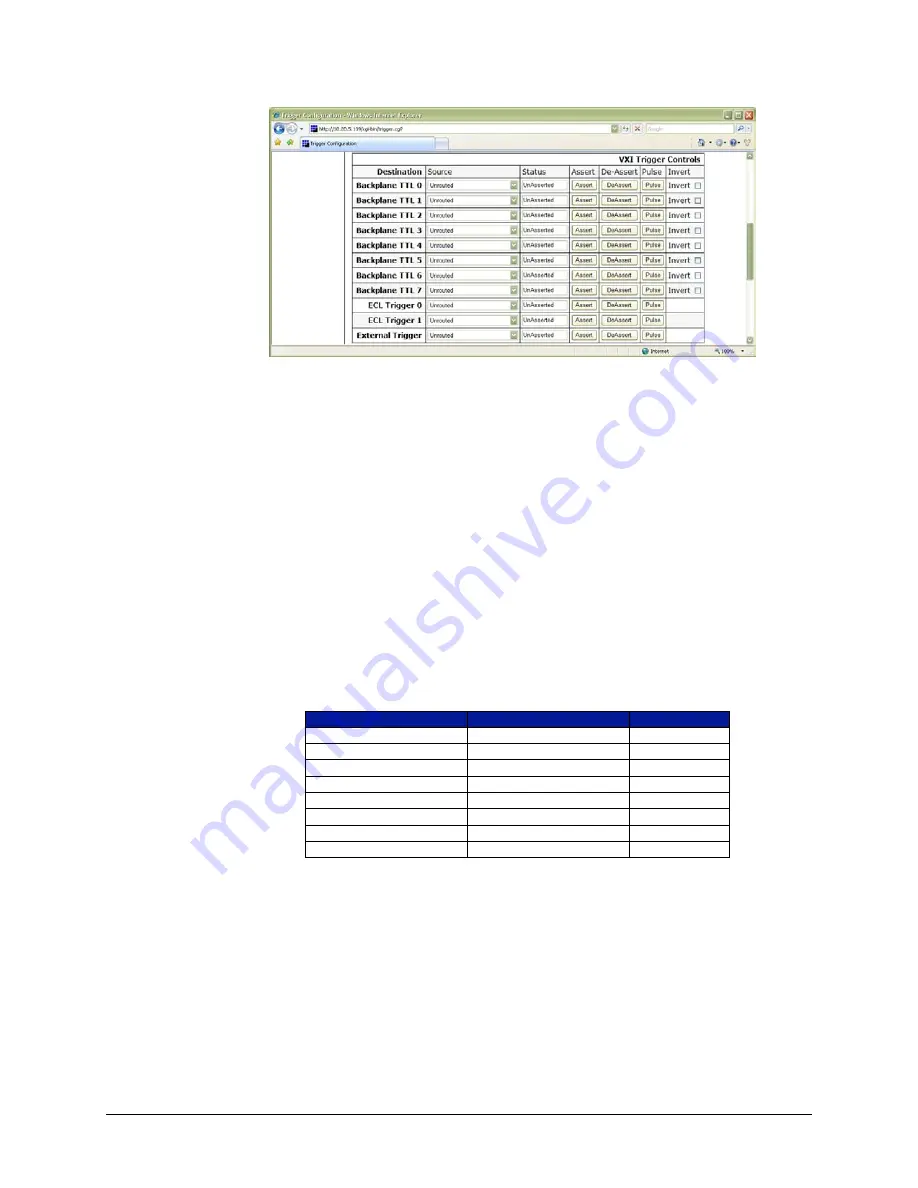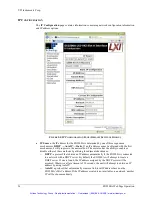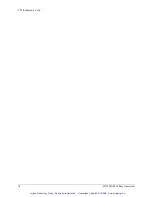
VTI Instruments Corp.
68
EX2500A Web Page Operation
F
IGURE
5-17:
T
RIGGER
C
ONFIGURATION
P
AGE
–
VXI
T
RIGGER
C
ONTROLS
•
VXI Trigger Controls
o
Destination
: the destination trigger to which the
Source
is routed.
o
Source
: the external trigger which is routed to the
Destination
.
o
Status
: an indication of the logical state (high or low) of the destination trigger. Data is
refreshed when the page is loaded and when a manual control button is executed.
o
Assert
: brings the trigger source to a logic low state.
o
De-Assert
: brings the trigger source to a logic high state.
o
Pulse
: causes the source to transition from its current state to the opposite state (e.g. high
to low or low to high) and then back to its initial state.
Due to signal conditioning ICs, level translation ICs, and the FPGA gate logic, there are inherent
propagation delays associated with trigger-to-trigger routing. The EX2500A allows routing of any
trigger source to any trigger destination, except in the case where the source and destination are
the same. For example, routing TTL trigger 1 to TTL trigger 1 will cause a high impedance to be
driven, by the EX2500A, on the TTL trigger 1 backplane signal; resulting in no TTL trigger 1
signal state change produced by the EX2500A. Table 5-2 lists the typical trigger circuit
propagation delays. For more information on trigger mechanisms, refer to
Section 6
.
Trigger Source
Trigger Destination
Typical Delay
External Trigger
LXI Trigger Bus Channel
22 ns
External Trigger
VME TTL or ECL
30 ns
LXI Trigger Bus Channel
External Trigger
22 ns
LXI Trigger Bus Channel
VME TTL or ECL
22 ns
LXI Trigger Bus Channel
LXI Trigger Bus Channel
20 ns
VME TTL or ECL
External Trigger
20 ns
VME TTL or ECL
LXI Trigger Bus Channel
20 ns
VME TTL or ECL
VME TTL or ECL
22 ns
T
ABLE
5-2:
T
YPICAL
T
RIGGER
R
OUTING
P
ROPAGATION
D
ELAYS
It is important to note that the three trigger busses (TTL, ECL, or LXI) have different maximum
trigger rates. The VXI TTL trigger bus has a maximum frequency of 12.5 MHz, the ECL’s
maximum frequency is 80 MHz, and the LXI trigger bus has a maximum frequency of 50 MHz. In
order to route from one trigger bus to another, the frequency of the signal being routed must be
less than or equal to the lowest maximum frequency between the two busses.
For example, an 80 MHz ECL signal cannot be routed to either the TTL or LXI trigger bus, as the
80 MHz signal exceeds the maximum frequency of these busses (12.5 MHz and 50 MHz,
respectively). However, a 10 MHz signal on the ECL line can be routed to either the TTL or LXI
trigger bus, as the 10 MHz signal is lower than the maximum frequency allowed by these busses.
Artisan Technology Group - Quality Instrumentation ... Guaranteed | (888) 88-SOURCE | www.artisantg.com
















































